
views
Preparing to Get Your Cat Neutered

Make an appointment with your local veterinary clinic. Castration is a surgical procedure that must be performed by a veterinarian. It is illegal for anyone other than qualified veterinarian to perform this surgery. Cats undergoing castration must be fully anesthetized during the procedure because performing surgery without anesthesia is an act of animal cruelty.
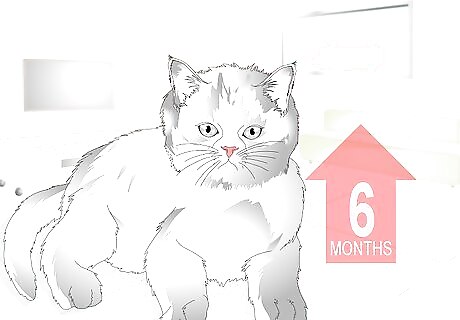
Try to neuter your cat before he reaches sexual maturity. Neutering, desexing, or castrating males (these are all different ways of expressing the term castration) is commonly done from 5 -6 months of age, before the cat reaches sexual maturity. There is however, much ongoing debate about the best age to neuter a male cat. Many cat welfare organizations now recommend neutering at a very young age, such as 8-16 weeks old. The American Veterinary Medical Association (AVMA) supports early age neutering, because of the problem of feral cat populations. In some states neutering before 12 weeks of age is required by law.

Ask for help if you cannot afford the procedure. There are many resources available to make spaying and neutering affordable. If you cannot afford the cost of neutering your cat, speak to your veterinary clinic or an animal welfare charity. Most clinics will be able to put you in touch with charities that offer vouchers for the cost of neutering, or else castrate the animal for you through their own veterinary clinics. Due to the resources available to those who cannot afford this procedure, it is totally unnecessary to resort to a home procedure.
Getting Your Cat Neutered
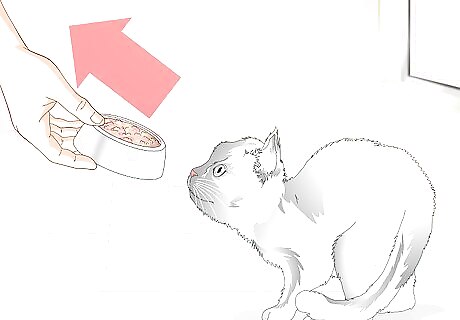
Make sure your cat fasts before his procedure. Prior to castration, it is important to withhold food from the cat overnight so that his stomach is empty for the anesthetic. This is because a cat may vomit while under anesthesia. If he brings up food and then breathes in the vomit, he may suffocate or inhale food down into the lungs where it could cause pneumonia or suffocation. Your veterinarian will likely instruct you to remove your cat’s food the night before surgery, but it is fine to leave water out for your cat overnight. Make sure that you remove the water at around 7:00 AM on the day of surgery.

Bring your cat to the veterinary clinic in a secure carrier. Cat carriers are essential to keeping your cat safe when you travel with him. A carrier will also to keep your cat safe and away from other animals at the clinic. It is a good idea to arrive around 10-15 minutes early. You will have to complete some paperwork, such as signing a consent form for the anesthetic and the surgical procedure.
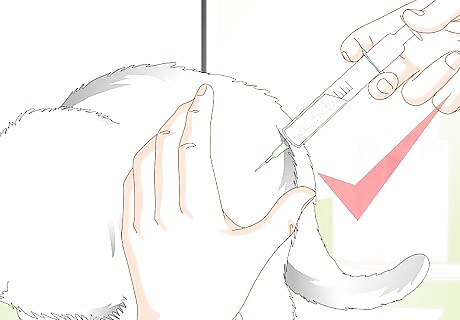
Take comfort knowing your cat will be anesthetized for the procedure. The veterinarian will check your cat to make sure there are no health issues such as a heart murmur, which may require your veterinarian to choose a different kind of anesthesia. The vet will select the safest most appropriate anesthetic for your cat. After your cat has been anesthetized, the vet or vet tech will administer lubricant drops into your cat’s eyes to stop the surface from drying out. This is because not all cats close their eyelids while under anesthesia.
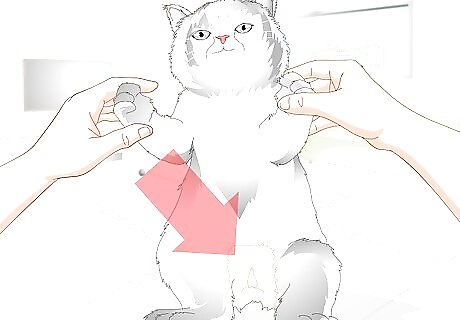
Expect your cat to have some shaved areas after the surgery. A vet tech will clip the fur away from your cat’s scrotum before the surgery. The vet tech will then scrub the skin of the scrotum to make it as clean as possible. This step helps to prevent infections. The veterinarian will scrub up to ensure that his or her skin is as clean as possible.
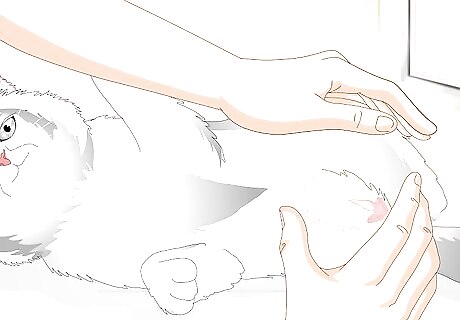
Learn how the testicles are removed. After the area is prepped, the veterinarian will make a small incision using a surgical scalpel. The incision will be less than 1 cm long over one-half of the scrotum. Then, the veterinarian will apply gentle pressure to the testicle and the testicle will pop out through the incision. Next, the veterinarian will tie the spermatic ducts and blood vessels to each other to prevent bleeding and to eliminate the need for sutures. After the spermatic ducts and blood vessels have been tied off, the veterinarian will sever the vas deferens and remove the testicle. Then, the veterinarian will repeat the procedure on the other side.
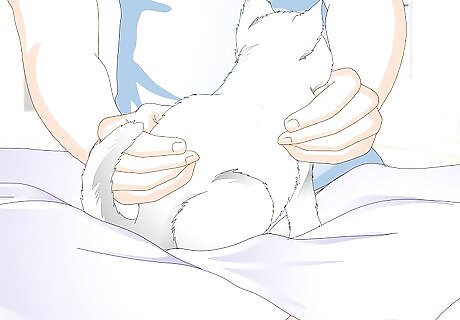
Care for your cat after the surgery. Your cat should be able to go home the same day. Healing takes 7 - 14 days, so during this time it is best to keep the cat indoors and avoid strenuous play. After he has healed, he may return to his normal activities. Check your cat’s wound daily to ensure that it is healing well. If you notice any signs of redness or swelling, call your vet. Prevent your cat from licking his wound. Licking may cause an infection, so stop your cat from licking his wound if you notice him doing so. Monitor your cat’s behavior. If you notice any unusual symptoms in the days following the surgery, such as lethargy, loss of appetite, constipation, black tarry stools, not urinating, or vomiting, call your veterinarian right away.
Considering the Importance of Neutering

Know that you will be helping to reduce the stray cat population. Unneutered male cats have a natural drive to mate and perpetuate their genetic line. It has been estimated that about 50 million stray cats live in the United States. Stray cats live short, difficult lives. They often die young due to disease, parasitism, fighting, or accidental injury. The best way to help stray cats is to reduce their number by humane methods such as spaying and neutering.
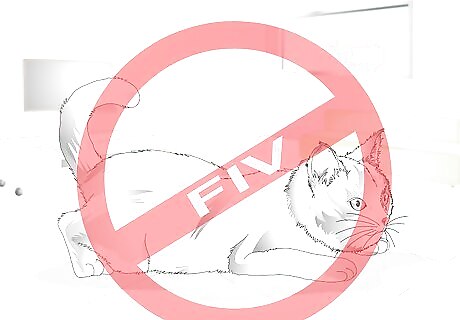
Be aware that you will be helping to eliminate disease. Feline immunodeficiency virus (FIV) is spread by bodily fluids such as blood and semen. An unneutered male cat is at increased risk of acquiring the virus, or spreading it to other cats. The rate of FIV infection in the US cat population varies from 1.5% to 15%.

Consider the benefits of eliminating or preventing spraying behaviors. If your unneutered male cat lives indoors, you may have noticed some unpleasant smells as a result of his urine. The pungent smell of unneutered Tom cat urine can fill an entire house, even if your cat uses the litter box. In addition, unneutered cats experience a strong natural drive to scent mark their territory by squirting urine against walls. Neutering can prevent this habit from forming in young cats. If your cat has already developed this habit, then neutering along with behavior modification training can eliminate spraying behavior.
















Comments
0 comment